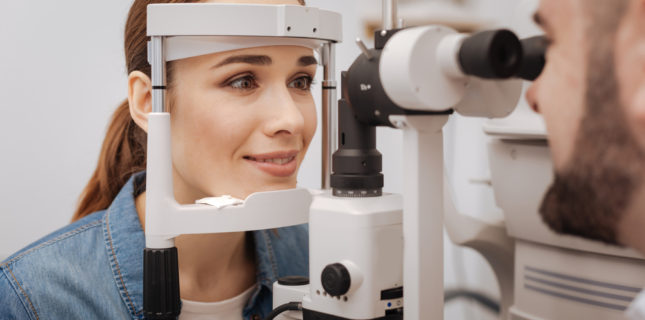
Diabetic Retinopathy…What, Why, and How
According to Prevent Blindness, the incidence of diabetic retinopathy has increased among Americans over age 40 by more than 89% since the year 2000. That’s a huge problem considering that 40-45% of America’s diabetics have diabetic retinopathy…and only half of them are aware of it. According to The Vision Council, 7.6 million Americans already suffer from diabetic retinopathy. Researchers are paying attention. In fact, Google recently announced a state-of-the-art computer vision system for reading retinal fundus images for diabetic retinopathy. With patients being diagnosed younger than ever, here’s some of what staff should know about the category.
Tip: Though diabetic retinopathy-related vision loss is sometimes irreversible, early detection (and treatment) can lessen the likelihood of blindness by 95%.
THE DEFINITION
“Diabetic retinopathy affects blood vessels in the retina,” explains The National Eye Institute. “It is the leading cause of vision impairment and blindness among working-age adults.”
THE CAUSE
“Chronically high blood sugar from diabetes is associated with damage to the tiny blood vessels in the retina, leading to diabetic retinopathy,” adds NEI.
CONTRIBUTING FACTORS
- SMOKING. The Surgeon General reports that smokers are 30-40% more likely to develop Type 2 diabetes than non-smokers, dramatically increasing the likelihood of diabetic retinopathy.
- OBESITY. Combine smoking with obesity and it is little wonder that diabetic retinopathy is skyrocketing.
- ELEVATED NUMBERS. High blood pressure and high cholesterol can also increase the risk of diabetic vision loss.
THE SUFFERERS
- RISK. All diabetics are at risk, and that risk increases with how long someone has been diabetic.
- PREGNANCY. Women who have or develop diabetes during pregnancy may experience worsened or rapid onset of diabetic retinopathy.
THE RESULTS
Diabetic retinopathy can cause blood vessels in the retina to leak fluid or bleed, distorting vision. In the most advanced of its four stages, the number of new abnormal blood vessels on the surface of the retina increase, which can lead to retinal scarring and cell loss.
PATIENT POINTERS
Here’s some info and recent research findings that may help your diabetic patients:
- EARLY DETECTION. Though diabetic retinopathy-related vision loss is sometimes irreversible, early detection (and treatment) can lessen the likelihood of blindness by 95%.
- ANNUAL EXAMS. Because early diabetic retinopathy is often asymptomatic, annual dilated eye exams are imperative. That frequency needs to increase with the severity of a patient’s condition. According to The National Eye Institute, “People with severe non-proliferative diabetic retinopathy have a high risk of developing proliferative retinopathy and may need a comprehensive dilated exam as often as every 2 to 4 months.”
THE BOTTOM LINE
The DCCT study (Diabetes Control and Complications Trial) determined that participants who kept their blood glucose levels low were “significantly less likely than those without optimal glucose control to develop diabetic retinopathy, as well as kidney and nerve diseases.” As for outcomes, The Vision Council reports, “During the first three of its four stages, no additional treatment is needed unless the patient has macular edema. For advanced cases, laser surgery may reduce vision loss.”
How do you handle patients diagnosed with diabetic retinopathy? Do you refer them out? Do you educate them and their families? Please tell us what you do by joining in the Facebook conversation here.
Comments are closed.









